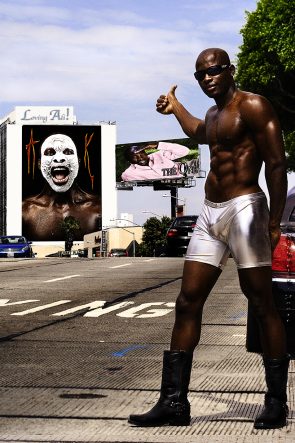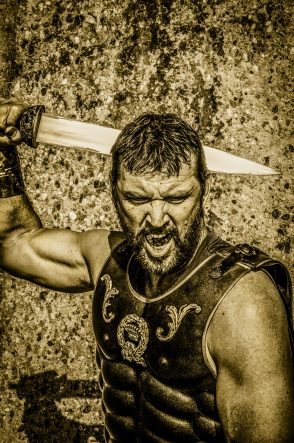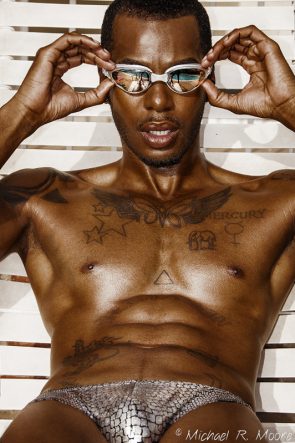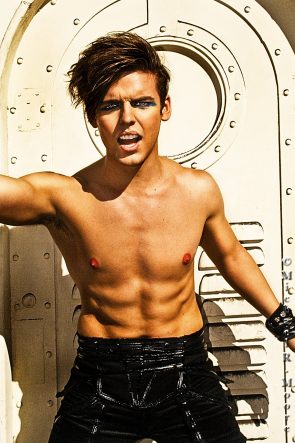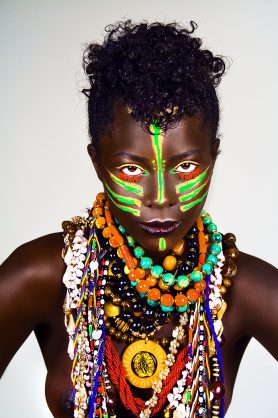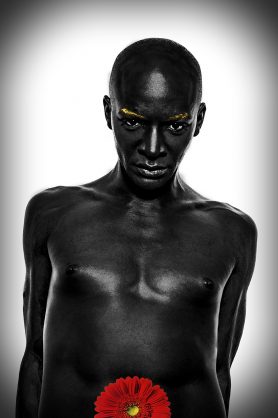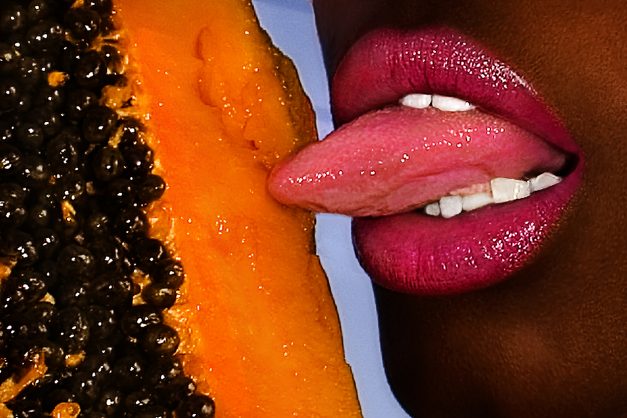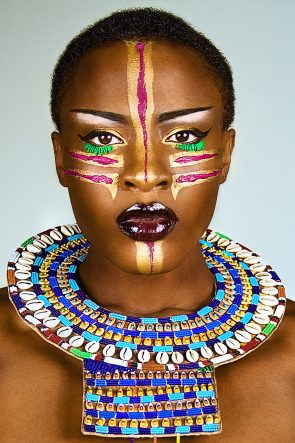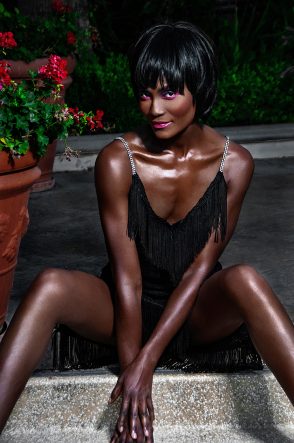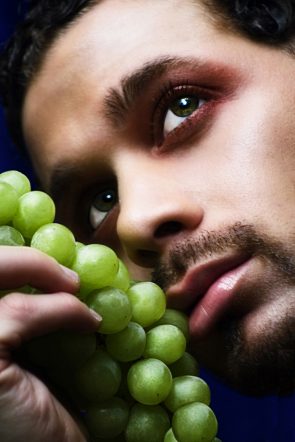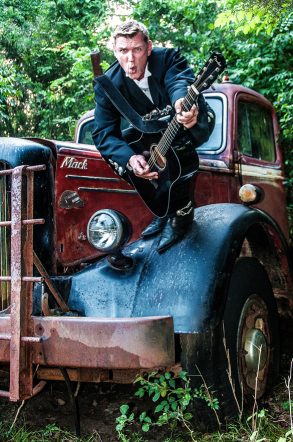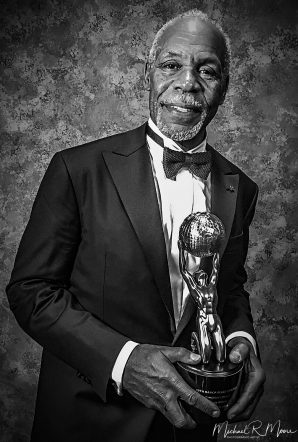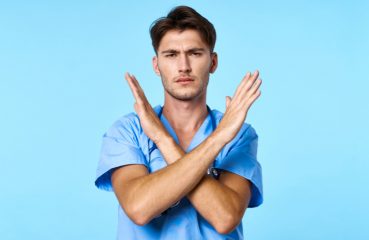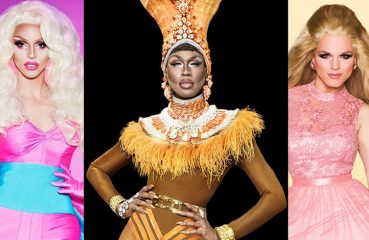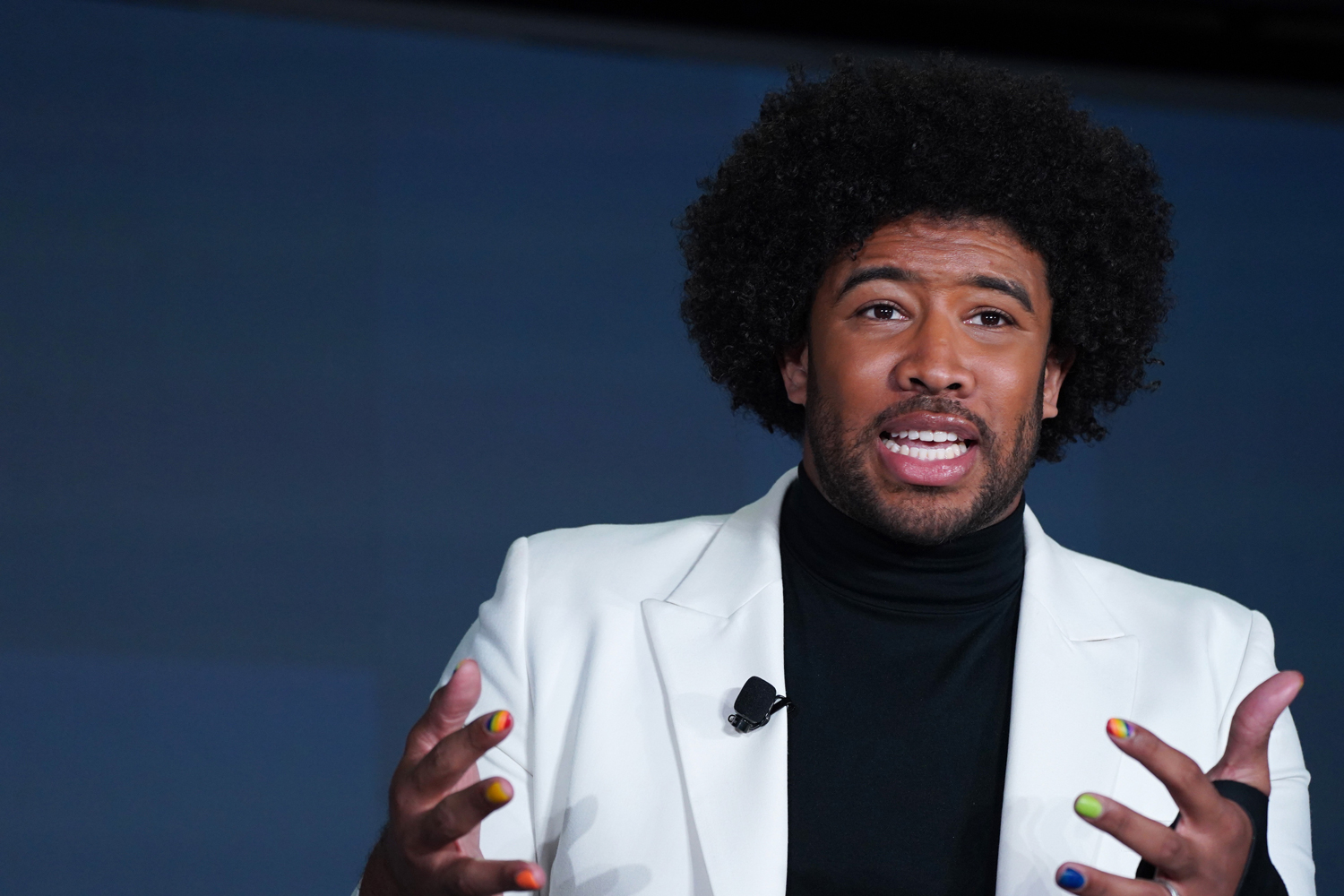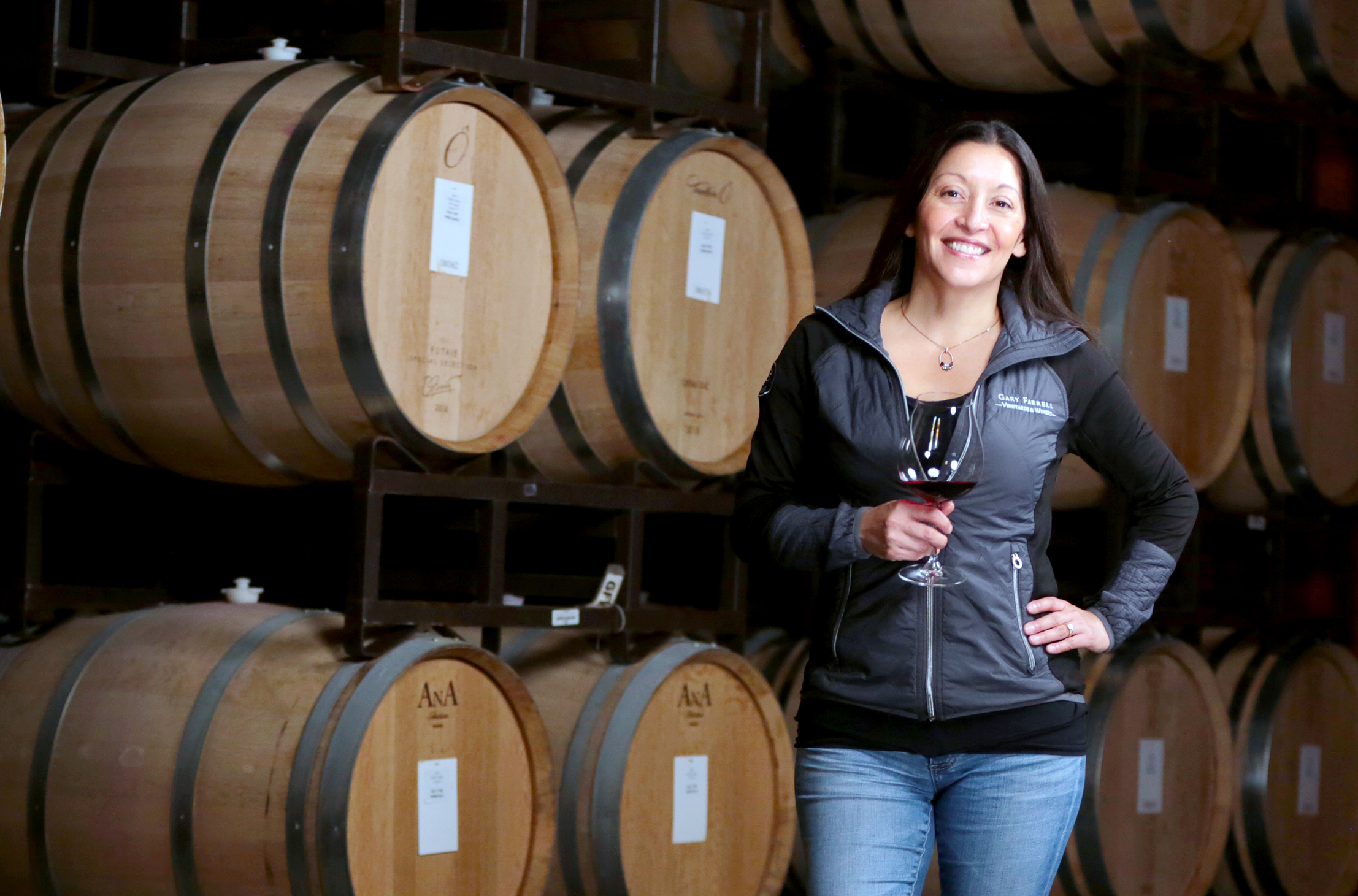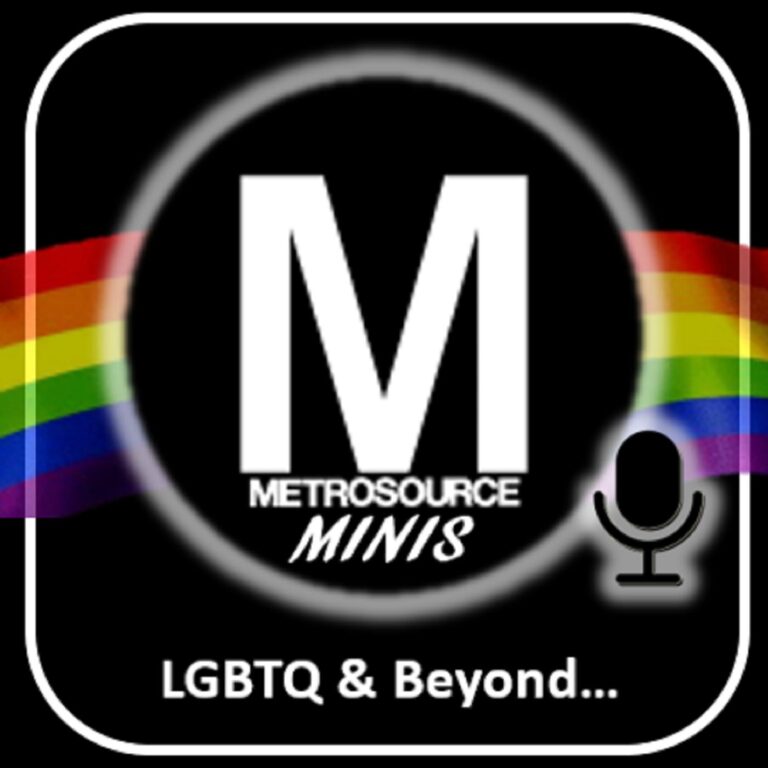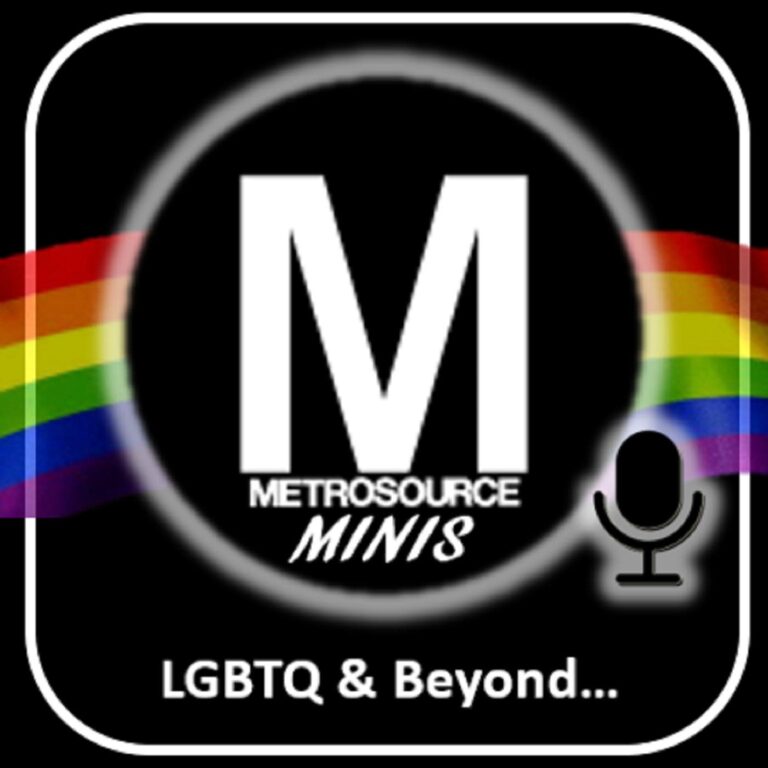There’s a special spark of life in the photography of Michael R. Moore. Where does it come from? Does it have to do with the fact that the Dallas-born artist has been shooting since the age of six? Could it relate to his uniquely personal appreciation of subjects who are LGBTQ or people of color? Might it be the way he approaches subjects – from celebrities to the homeless – with the same sense of wonder? As it turns out, the secret is written on the skin of the 64-year-old LA transplant. “I have a tattoo,” he reveals, “that says: I am nothing but love.”
Darkroom on My Desk
When asked when his relationship with photography began, there is an almost childlike awe in the gravel-tinged voice of the artist. This might be because he started at such a young age.
“I was in the darkroom by seven,” Moore remembers. “I modeled from the age of six to 17.” At that point, his agent saw some photos Moore had taken. “‘Did you do these?’ she said. And I said, ‘Yeah.’ And she said, ‘Why didn’t you tell me?’ I told her, ‘It’s just something I do.’” She made a phone call, and Moore began working professionally at 18.
“As I got older, I was more able to command people” he explains. “I was more able to create what I saw in my head. Digital helped a lot with that.” However, he was reluctant to abandon analog photography at firs But then “a friend bought me a digital camera and I felt like I was six years old again.” It was a relief for Moore to no longer be limited by a set number of exposures and to be finally free to explore how the photos could be further manipulated once they appeared on his computer screen. “I would have these visions and things that I wanted to do that I really couldn’t do in the darkroom.”
So even though at that point he’d had a studio in Hollywood for six years, he shut it down to study what could be done with digital. “My computer is now my darkroom on my desk,” he explains. He celebrated 46 years as a photographer in June of 2019.
Everything Just Turns Me On
When asked about what inspires him, it seems to be the act of photography itself. “I’m actually really, really crazy about just shooting. I shoot every day. Even if it’s not a gig, you know? I shoot shadows on walls, landscapes, urban scenery. Everything just turns me on visually.” At times, the camera was more of a way of looking at the world than recording it. “I remember there was a time when I was shooting. I would just be clicking my camera, looking through the viewfinder, without even having film in it.”
Considering his intimate relationship with the medium, it may be no surprise that Moore has developed a unique vocabulary in which photography sounds distinctly like an act of communication. “I call portraits conversations because we’re having a conversation,” he explains. “And when I’m doing full-length, I call it a dance because we’re moving. I’m moving and they’re moving and we’re just dancing, having fun.”
And then there are Moore’s extraordinary shots that feature extreme makeup. “I call those my dreams because they are,” he offers. He points to one example in particular. “There’s an image of a young lady and she’s painted black with gold hair,” he remembers. “I was home in Texas, laying on my mom’s sofa in the den and that image came to me. I wanted her to be crying. And I called the make-up artist right away, and I was like, ‘Oh My God!’ In the shot that resulted, the girl’s hair is fantastically flecked with gold and she is, indeed, crying. “The gold tears that she’s crying is actually K-Y jelly with gold eyeshadow,” Moore reveals.
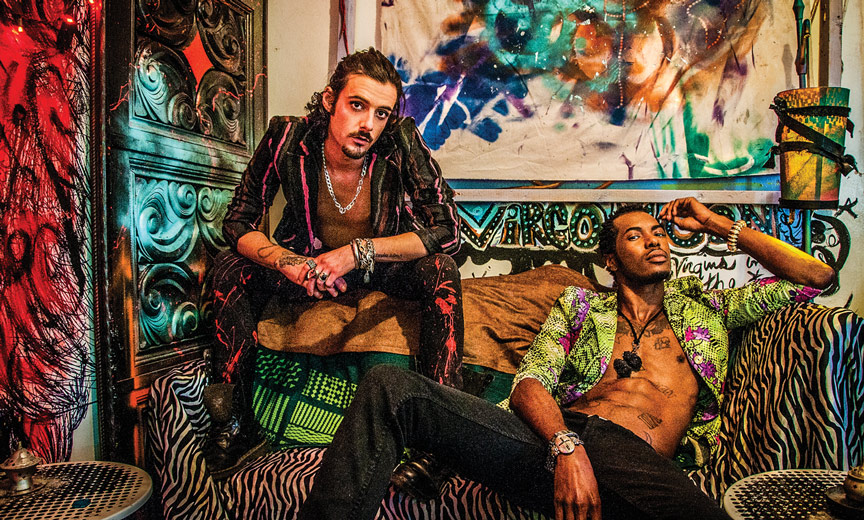
Photo by Michael R. Moore
We Needed More Light
Moore responds with a pleased laugh at the suggestion that the extraordinary way he captures people of color on film could be seen as an act of social justice, considering photography for many years was usually balanced to favor white skin. “I have been accredited with shooting black people differently,” he admits. “And a lot of black people come to me because of the way that I shoot black people. I learned very early from a black man how to shoot. And I grew up in a black neighborhood where I used to walk around and shoot people on the street. I learned that we needed more light.”
For years, Moore struggled with the fact that most makeup also did not seem designed to favor darker skin. As a result, black subjects “would end up either in black-and-white looking ashy or in color: they would be pale with a pink or orange undertone.”
Though Moore has carefully watched the evolution of makeup, he’s not afraid to ask models to go without. “Right now, I’m working on a project where I want to shoot women, and I just want three elements of make-up: red lipstick, Vaseline and eyelashes.”
Moore asked a young lady with whom he’d worked for many years to pose for the series. “And she came with a completely beat face,” he says with a hearty laugh. He explained the concept to her again and asked her to remove the makeup. She hesitated. “Michael, I don’t know if I can do that,” he remembers her saying. This was a subject, Moore notes with pride, that has been “photographed everywhere” and appeared in movies and music videos. “She had just not been photographed without make-up.” Nevertheless, when she washed her face and they took the photos, she loved his results.
Read Next | Homoerotic and Hypnotic: This is the Artwork of Gus Van Sant
One of My Muses
Moore sees his tendency to develop long term relationships with subjects as a plus. At times it has even begun online. “One guy, we were friends on Facebook,” Moore recalls. And the guy kept saying, “I really want to work with you.” Later, he was at the presentation breakfast for an LGBTQ cultural calendar that has featured Moore’s work for the last three years. “From behind, somebody said my name, and I turned around, and it was the guy from Facebook,” Moore recalls.
About two weeks later, Moore called him in for a session. “We worked, and I have a feeling that he will be one of my muses,” says Moore. “He does one man shows, designs clothes, writes poetry. That’s his living, and he’s very avant-garde.”
“Once I’ve shot them they become Mo-Boys,” Moore explains. “‘Cause of the fact that I can drop a dime and say, ‘Let’s play,’ and they’re willing to do it.”
“I have Mo-boys that I met and photographed when they were, like, 17 and they’re in their forties and I’m still working with some of them,” Moore adds. “So, yes, people do not only inspire me and I inspire them: We become family.”

Photo by Michael R. Moore
Where’s the Damn Tiger?
When asked to create a sense of indulgence on film, Moore isn’t afraid to pull out all the stops. “Where’s the damn tiger?” he says with a laugh. He remembers a shoot at which he worked with a half-million dollars in jewelry. “We had two security guards, and – you know – it was great,” he remembers. “It turned out to be a beautiful ad campaign.”
But the heart of indulgence takes him back to his love of photography. “I find that just creating, for me, is my indulgence. It feeds my soul, keeps me from being depressed,” Moore says. It seems to be a reminder of how fortunate he is to be doing what he loves. “Being a gay black male,” he contemplates, “I could be in prison, maybe on drugs. There’s so much that I could have going against me.”
Moore’s personal indulgences include good food, music and shoes. “I go from Converse to Louboutins. You know? I just love shoes. I love fashion, but I love shoes! I’m not opposed to wearing a good pair of pumps – the higher the better!”
His eclectic tastes also extend to music. “I was raised in a musical environment growing up. I have had several friends that are creative musically from gospel to rap. And I have a friend here — his name is Unkal Bean. He has been hosting an open mic for 16 months now every Monday night. And I attend. I went this past Monday, and there was a folk band; there were rappers; there were singers; a young lady just moved here from Texas — been here a month! And she tore it down! She moved to LA to get on The Voice, and she didn’t make it. But she said she just has to sing.”
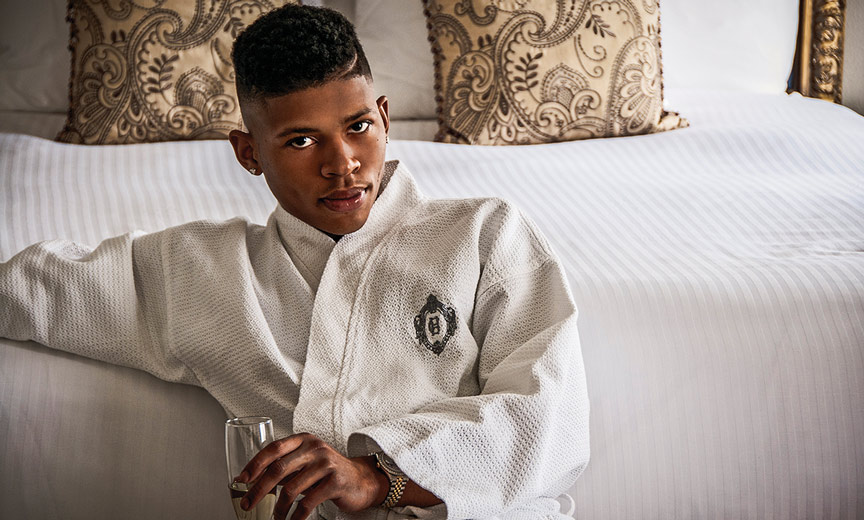
Bryshere Y. Gray photo by Michael R. Moore
Something Strange and Tragic
However, on at least one occasion, Unkal Bean’s open mic has lead to more than an opportunity to witness excellent musicianship. “Something strange and tragic happened a week before last at open mic,” Moore reveals. “I’m there, and I’m videotaping and — you know how you’re in a crowd and you feel somebody looking at you, and you look over and your eyes meet? Well, that happened to me!”
“And this guy, he smiled and he nodded. I smiled and nodded. And with that, he aggressively started making his way through the crowd to get to Unkal Bean, who had the mic. And he put his hand on the mic, and it was this back and forth little tussle and Unkal said, ‘Get in line and wait your turn!’
“The guy did, and there was, like, one person before him. So he comes up, and this guy confessed to murdering his girlfriend – and burying her in the dirt! And that next morning, that Tuesday morning, Unkal calls me and he goes, ‘You know crazy guy that came last night?’ I was like, ‘Yeah.’ He said, ‘I just watched SWAT surround and handcuff him — he was sleeping in his car.’ And they still haven’t found her body!”
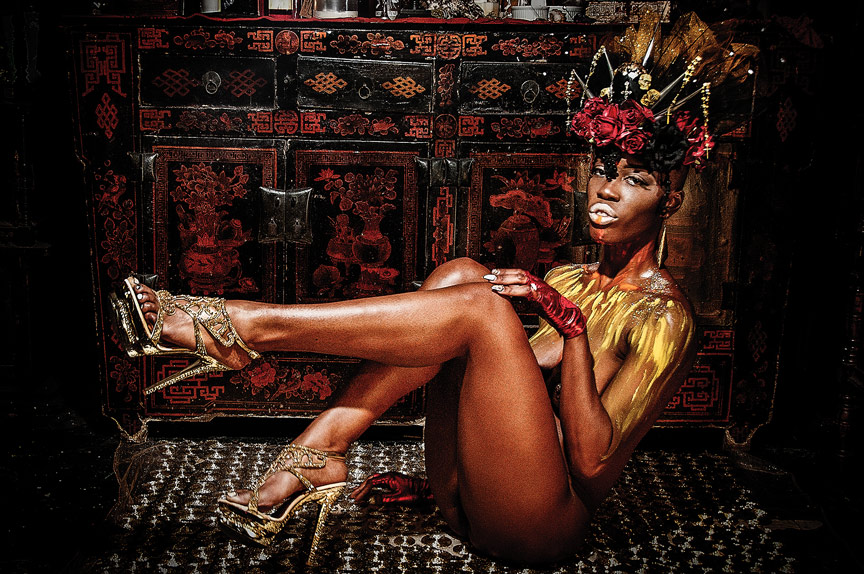
Photo by Michael R. Moore
On the Block
Such incidents have not shaken Moore’s resolve to stay involved with the less fortunate in his community. He makes a point of attending gatherings such as The Wayfarer Foundation’s Skid Row Carnival of Love – which is meant to create bridges between those experiencing homelessness and the wider community, while also helping provide necessities to the former. These can include health care, legal advice, career opportunities, hygiene services, food and even pet care. “Paul Mitchell has these teams,” Moore offers as an example. “Stylists come and give haircuts.” These are also joyous events featuring carnival games and music. Moore has also been part of events where volunteers visit to hand out food and clothing weekly to those who need them around Skid Row. Moore will take pictures at such events and gift them to the organizations to use as part of their awareness-raising efforts.
Down on Skid Row
“I live on the edge of Skid Row,” Moore explains. He describes an approximately-50-block area of LA. “When I moved here, my friend that I was living with — we lived in a loft space in downtown when it was not the chic thing to do. Sort of like the East Village in the ‘80s. When I got up that next morning, he said, ‘C’mon! I wanna show you something!’ So we got in his little Toyota truck and we went like two blocks behind where we were living, and I had not ever seen anything like it! The homelessness! And now it’s like 20 times worse. In fact, there are some blocks you cannot even walk down because of tents and stuff, and it’s almost like a third world country. And we’re maybe four blocks from City Hall!”
Moore’s friend Unkal Bean is also known among the homeless. As such, Moore has also been working on a series tentatively called On the Block with Unkal. “At first I was very hesitant about photographing homeless people. It bothered my soul to do it. I would always hesitate,” Moore explains, “and think about that person’s dignity, that person’s history – which I don’t know, and I think about family, you know?”
“I’ve been documenting Unkal for 15 years. He is very well-respected and regarded in the homeless community. So, we’re out and about, and I’m photographing him, or we could just be standing on the street corner talking. And I’ve always got the camera with me and somebody would come up and say, ‘Take my picture with Unkal!’” The results are a mesmerizing series of photographs. “These people that are homeless are with Unkal and they are very touching portraits. Some are funny. And some — you just stare at them.”
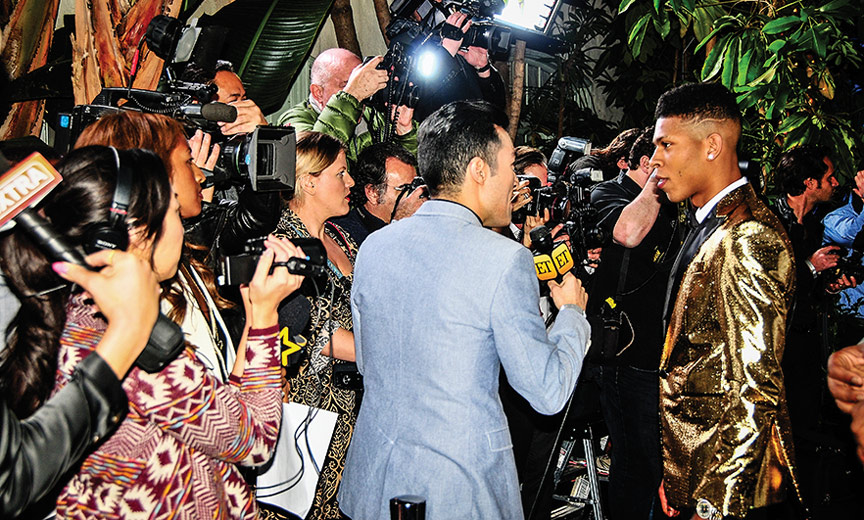
Bryshere Y. Gray on the Red Carpet photo by Michael R. Moore
Playing Favorites
Moore says it’s hard to choose a favorite from among his decades of work. “It’s like asking parents with multiple kids, ‘Who’s your favorite?’” he explains, although he is an only child. Though he also admits, “There have been some that shine more because of the exposure.”
“I have a photograph of my great grandmother when she was 103. At my first exhibition, I showed it,” he remembers. “A large majority of the people wanted to buy it, but I couldn’t sell it.”
Moore also counts among his highlights the more than three years of work he’s done with Empire star Bryshere Y. Gray. “The images that I created with him are fabulous to me because I was with this guy anywhere from 10 to 16 hours at a stretch — shooting him on junkets, on red carpets, for editorial, even just hanging out.” Moore remembers when they were first introduced. “My friend who got me the gig, Jayson Griffin, is his personal stylist. Jayson called me and he said, ‘I have a celebrity for you.’”But he couldn’t tell Moore who the celebrity was.
Read Next | These Are Our Top 8 DragCon Video Interviews of All Time
Who the Celebrity Was
As a show of good faith, Moore went on a long drive to the Valley to meet the mystery celebrity. Moore describes it as quite the journey, and mentions that by the end of it, he was rather uncomfortably aware of the call of nature. So when Moore was finally led up into a mysterious apartment where “there was this one person in the kitchen that you could see when you opened the door but they had this hoodie on. When he turned around, it was Bryshere,” Moore recalls. “I just walked up to him and I said, ‘You know, I really wanted to kick your ass!’ And his eyes got big, and I said,’“But Cookie already did it for me!” (For the unfamiliar, Moore was referring to the scene early on in Empire when Taraji P. Henson’s character Cookie gave Bryshere’s character, her son Hakeem, quite the whupping.)
“And he laughed and that was the beginning,” Moore remembers fondly. Gray and Moore developed an instant rapport. Gray engaged Moore as his personal photographer and they arranged to meet whenever Gray was in Los Angeles. Gray’s Mom has told him she feels safer knowing Moore is around her son. She even used one of Moore’s photos on the cover of her book.
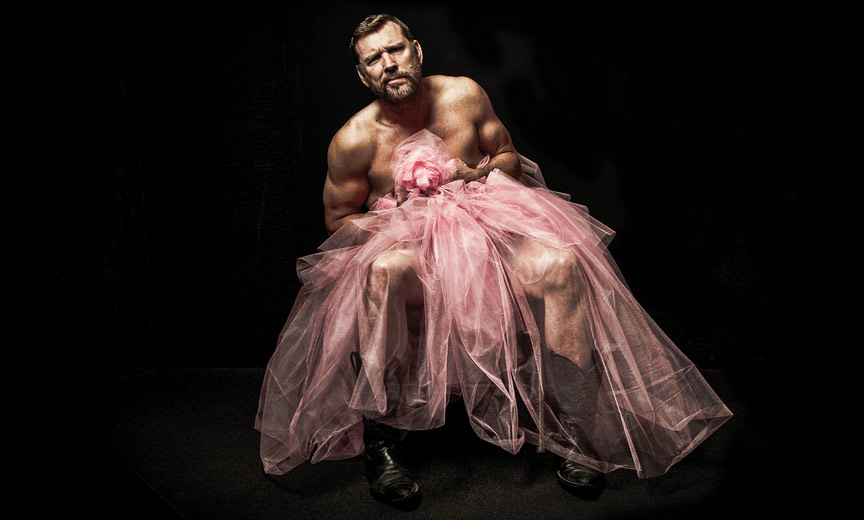
Photo by Michael R. Moore
What Comes Next?
What Moore sees ahead for himself is the fulfillment of a dream he’s had since he moved to LA 30 years ago. “I moved here to document Black Hollywood – old school, new school and kindergarten,” he says. “I consider Bryshere, he’s my kindergarten. And I had the honor and pleasure to be invited to the NAACP Awards with Danny Glover. When he achieved his Lifetime Achievement Award, I got to photograph him.” So now Moore’s goal is to “fill in that gap – from Danny to Bry.”
Moore would also like to photograph Brad Pitt. “In the photographs that I’ve seen of him throughout the decades,” Moore points out, “he’s such a giving subject.”
Love Conquers
Beyond that, Moore has a hope for us all to share going forward. “In this time that we’re living in, I want to express that — and it sounds elementary and it sounds simple and it sounds too flower power: we gotta love and understand the power of love,” he says. “And I see a brighter future because I am surrounded by LGBT youth, and they are passionate, and they are strong and they are resisting the bullshit. They have fire.”
“On the one hand, it is so uplifting. And on the other hand, it is so disheartening and painful that a lot of transgender male-to-females are being murdered,” he adds. “And it’s like open season, you know?”
“I just want people that are truly human to use their love to educate, to free people,” he continues. “Because I grew up in a family that loved me. I remember when the term ‘closet’ came out. And I was like, ‘What’s that?’’’ Perhaps one of the keys to Moore’s success was that – unlike so many LGBTQ people of his generation – he did not experience rejection and isolation from his family because of his identity. “The love that I got from my family and friends growing up made me — makes me, because they still do — the man I am today.
“I truly believe that the power of love will conquer, does conquer, has to conquer. Love conquers. And again, in this time that we live in, we all need it. Even the people that hate — they need love because that’s what they’re lacking. It’s the ignorance of love.”
To learn more about Michael R. Moore and purchase prints of his work, visit him online at iammoore.com.
Want to know when we publish more articles like this one? Sign up for MetroEspresso.
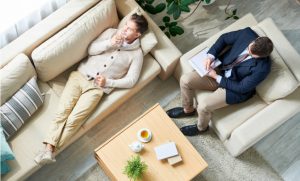
Read Next | Finding a Great LGBT-Friendly Therapist or Counselor in NYC
Last modified: September 27, 2019


